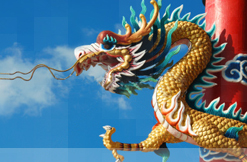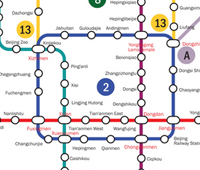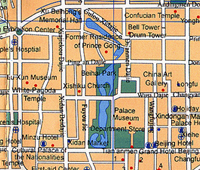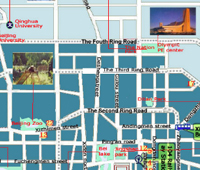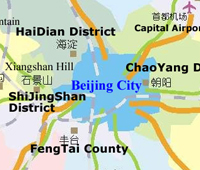


Contact




Fragrant Hill Park
The Fragrant Hill, also known as the Forest Park, is located on the eastern sides of the Western Hills, approximately 10 kilometers to the west of Beijing. It’s located at approximately 40.2 kilometers distance from Beijing Capital International Airport.
Taxi are available at approximately 150 RMB cost.
Please print out this information about the hotel in Chinese, and show it to the taxi driver.
Address: № 40 MaiMai Street, Beijing, China.
opening hours: 6:00AM - 18:30PM
Web Site: http://www.xiangshanpark.com/en/
Taxi are available at approximately 150 RMB cost.
Please print out this information about the hotel in Chinese, and show it to the taxi driver.
Address: № 40 MaiMai Street, Beijing, China.
opening hours: 6:00AM - 18:30PM
Web Site: http://www.xiangshanpark.com/en/
Fragrant Hills is a large forest park with the characteristics of imperial gardens in which natural landscape is combined with artificial scenery. It covers an area of 160 hectares. Its highest peak, 557 meters above sea level, looks like a huge incense burner, so it gets the name “Incense Burner Peak.” (Xiang Lu Feng [Shan]): the name Fragrant Hills (Xiang Shan) is derived from this.
Fragrant Hills has a very long history. A park was established in 1186, during the Jin Dynasty, and renovated by emperors of the Jin, Yuan, Ming and Qing Dynasties (1115-1911). In 1745, Emperor Qianlong ordered large-scale construction. At that time, 28 beautiful scenes with enclosing walls were set up and named Jingyi Park by the emperor.
The more important scenic spots are as follows:
Jianxin Study: Built first in the Jiajing period of the Ming Dynasty, this complex of buildings stands to the west of Eyeglasses Lake. The study contains a semi-circular pond and an adjacent pavilion, surrounded on three sides by covered galleries. Beyond the pavilion are rockery hill and a grove of trees concealing a gazebo.
Zhaomiao (Luminous) Temple: Constructed in 1780 in the Qianlong period, this Lamaist temple is said to have been built especially for the Panchen Lama. In its center, a Red Terrace rises 10 meters above the ground. On its eastern side is a memorial the archway of white marble and glazed tile, while on the slope to the west is a seven-story glazed pagoda, the eaves of which are hung with tiny bells, which tinkle with even the slightest breeze.
The Tree-Covered Imperial Audience Tablet: Located to the southwest of the Chaoyang Caves, this group of steep cliffs with numerous trees resembles a giant hu - the rectangular tablet officials held before themselves in the presence of the emperor.
Guijianchou (Worried Ghost) Peak: The main peak of Xiangshan Park, Worried Ghost Peak had an elevation of 557 meters. Clouds and mist often engulf its precipitously angled cliffs, which give the two large stone excrescences of the peak a resemblance to incense burners. It is from this that the name Xiangshan or Incense Mountains (and not Fragrant Hills, as the area had been mistakenly called for generations) is derived.
From the peak, the winding Yongding River like a white silk belt fluttering among the western valleys, the Marco Polo Bridge on the river, Shijing Mountain, the Summer Palace and Jade Spring Mountain can all be seen from here, and on a clear day one can even make out the skyline of Beijing.
Fragrant Hills has a very long history. A park was established in 1186, during the Jin Dynasty, and renovated by emperors of the Jin, Yuan, Ming and Qing Dynasties (1115-1911). In 1745, Emperor Qianlong ordered large-scale construction. At that time, 28 beautiful scenes with enclosing walls were set up and named Jingyi Park by the emperor.
The more important scenic spots are as follows:
Jianxin Study: Built first in the Jiajing period of the Ming Dynasty, this complex of buildings stands to the west of Eyeglasses Lake. The study contains a semi-circular pond and an adjacent pavilion, surrounded on three sides by covered galleries. Beyond the pavilion are rockery hill and a grove of trees concealing a gazebo.
Zhaomiao (Luminous) Temple: Constructed in 1780 in the Qianlong period, this Lamaist temple is said to have been built especially for the Panchen Lama. In its center, a Red Terrace rises 10 meters above the ground. On its eastern side is a memorial the archway of white marble and glazed tile, while on the slope to the west is a seven-story glazed pagoda, the eaves of which are hung with tiny bells, which tinkle with even the slightest breeze.
The Tree-Covered Imperial Audience Tablet: Located to the southwest of the Chaoyang Caves, this group of steep cliffs with numerous trees resembles a giant hu - the rectangular tablet officials held before themselves in the presence of the emperor.
Guijianchou (Worried Ghost) Peak: The main peak of Xiangshan Park, Worried Ghost Peak had an elevation of 557 meters. Clouds and mist often engulf its precipitously angled cliffs, which give the two large stone excrescences of the peak a resemblance to incense burners. It is from this that the name Xiangshan or Incense Mountains (and not Fragrant Hills, as the area had been mistakenly called for generations) is derived.
From the peak, the winding Yongding River like a white silk belt fluttering among the western valleys, the Marco Polo Bridge on the river, Shijing Mountain, the Summer Palace and Jade Spring Mountain can all be seen from here, and on a clear day one can even make out the skyline of Beijing.
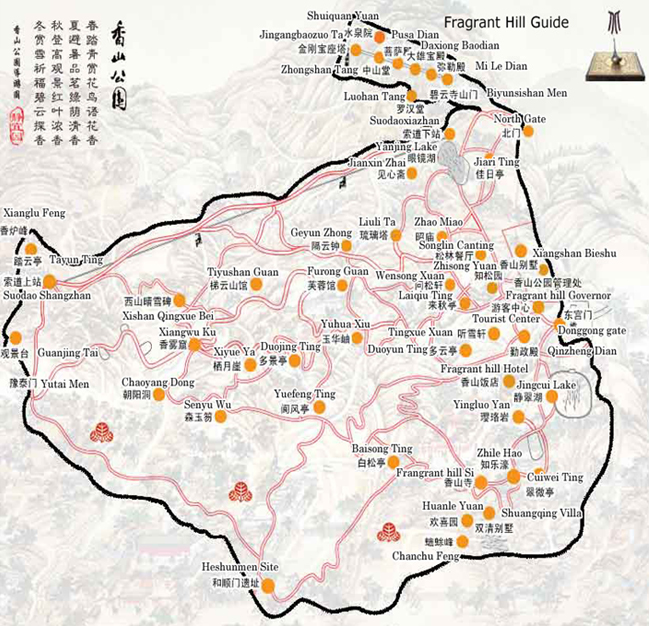
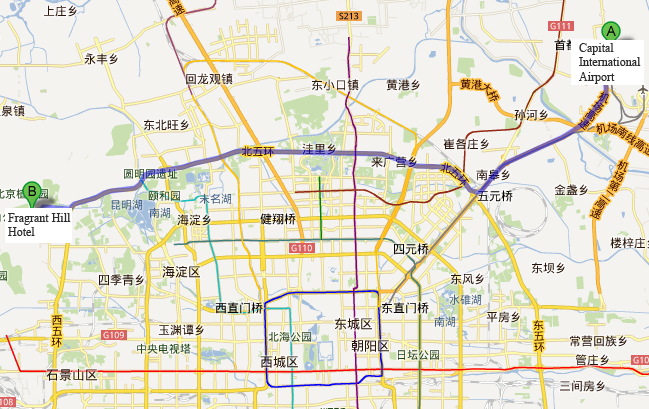
Banquet: Restaurant Bai’s Courtyard
It is located in the Suzhou Street, Haidian District, in the famous "Lejia Garden". It is a royal court dished style restaurant, Royal Cuisine and the Qing Dynasty-style cuisine. It’s very famous in Beijing.
Address: Suzhou street № 15 Haidian District, Beijing.
Telephone Number: 8610 - (010) - 62658851
Web Site: http://www.baijiadayuan.cn/
Address: Suzhou street № 15 Haidian District, Beijing.
Telephone Number: 8610 - (010) - 62658851
Web Site: http://www.baijiadayuan.cn/
The Inner Scenes of the Restaurant
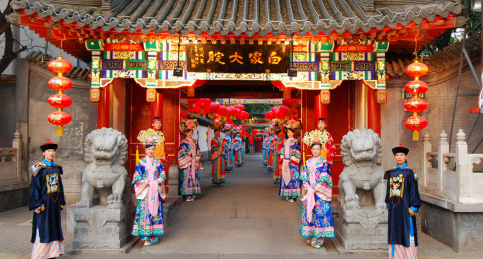
Theatrical Performances
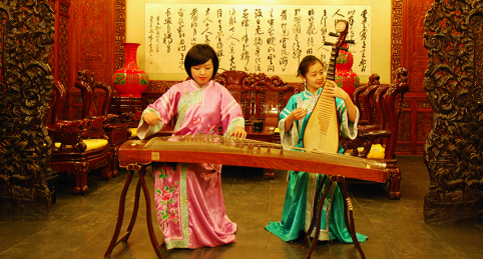
Beijing City
Beijing , also known as Peking , is the capital of the People's Republic of China and one of the most populous cities in the world, with a population of 19,612,368 as of 2010. The city is the country's political, cultural, and educational center, and home to the headquarters for most of China's largest state-owned companies. The metropolis, located in northern China, borders Hebei Province to the north, west, south, and a small section to the east, and Tianjin Municipality to the southeast.
Governed as a municipality under the direct administration of the national government, Beijing is divided into 14 urban and suburban districts and two rural counties. It is a major transportation hub, with dozens of railways, roads and motorways passing through the city, and the destination of many international flights to China.
Few cities in the world have served as long as the political and cultural centre of an area as immense. Beijing is one of the Four Great Ancient Capitals of China. It has been the heart of China’s history for centuries, and there is scarcely a major building of any age in Beijing that does not have at least some national historical significance. The city is renowned for its opulent palaces, temples, and huge stone walls and gates. Its art treasures and universities have long made it a centre of culture and art in China.
Governed as a municipality under the direct administration of the national government, Beijing is divided into 14 urban and suburban districts and two rural counties. It is a major transportation hub, with dozens of railways, roads and motorways passing through the city, and the destination of many international flights to China.
Few cities in the world have served as long as the political and cultural centre of an area as immense. Beijing is one of the Four Great Ancient Capitals of China. It has been the heart of China’s history for centuries, and there is scarcely a major building of any age in Beijing that does not have at least some national historical significance. The city is renowned for its opulent palaces, temples, and huge stone walls and gates. Its art treasures and universities have long made it a centre of culture and art in China.
Beijing City Map:
Beijing Tourist Map
HEAT TRANSFER International Research LABORATORY
Kutateladze Institute of Thermophysics SB RAS
1, Lavrentiev avenue,
630090, Novosibirsk, Russia
Kutateladze Institute of Thermophysics SB RAS
1, Lavrentiev avenue,
630090, Novosibirsk, Russia
Copyright © 2011-2012









